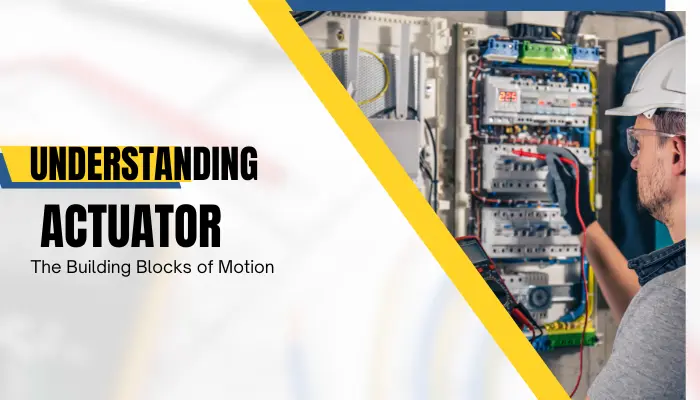Understanding Actuators: The Building Blocks of Motion

In today's rapidly evolving technological landscape, where automation and robotics are becoming increasingly prevalent, understanding the role of actuators in creating motion is paramount. Actuators are the indispensable components for transforming electrical signals into physical movement, driving everything from simple household appliances to complex industrial machinery. In this comprehensive guide, we will delve into the world of actuators, exploring their types, functions, applications, and their pivotal role in our daily lives.
Unveiling the Power of Actuators
To begin our journey into the realm of actuators, let's ponder a few intriguing questions: How do robots execute precise movements with grace and accuracy? How does your smartphone's camera autofocus to capture sharp images? The answers to these questions revolve around the ingenious mechanisms of actuators.
Actuators are, in essence, the muscles of machines. They are responsible for initiating and controlling motion in various devices, ranging from humble household gadgets to advanced industrial robots. By converting electrical energy into mechanical motion, actuators bring life to countless technologies we rely on daily.
The Types of Actuators: A Diverse Array
Hydraulic Actuators
Hydraulic actuators utilise pressurised fluids, usually oil, to generate motion. They are prized for their immense power and ability to handle heavy loads. Hydraulic systems are commonly found in construction equipment, automotive brakes, and aircraft control surfaces.
Pneumatic Actuators
Pneumatic actuators, on the other hand, rely on compressed air to drive motion. They are renowned for their rapid response times and versatility. You'll encounter pneumatic actuators in applications such as pneumatic drills, conveyor systems, and even in the automation of assembly lines.
Electric Actuators
Electric actuators are the darlings of precision and control. They are prevalent in situations where accuracy and reliability are paramount. Electric actuators are used extensively in robotics, 3D printers, and medical devices like MRI machines.
Piezoelectric Actuators
Piezoelectric actuators harness the unique properties of piezoelectric materials to create precise, nanoscale movements. They find applications in nanopositioning systems, atomic force microscopes, and even in fine-tuning the mirrors of astronomical telescopes.
The Functionality of Actuators: Making Motion Happen
Now that we've explored the diverse types of actuators let's dive deeper into their functionality. Regardless of their type, actuators all share a common goal: to convert energy and create movement. Here's how they achieve this:
Actuators receive electrical signals from a controller or a computer, which dictate the desired motion. These signals trigger the actuator to move, whether it's extending a hydraulic piston, inflating a pneumatic cylinder, rotating an electric motor, or causing a piezoelectric crystal to expand or contract.
Applications Across Industries: Where Actuators Excel
Actuators are the unsung heroes behind countless innovations across various industries. Here are a few examples of their remarkable applications:
Automotive Industry
In automobiles, actuators control everything from engine components like throttle valves and fuel injectors to safety features such as airbags and power windows. Their precision and reliability are vital for safe and efficient driving.
Aerospace and Aviation
In the aerospace sector, actuators are instrumental in controlling the movement of aircraft flaps, landing gear, and even the precise positioning of satellite payloads. Their robustness ensures the safety of air travel.
Healthcare and Medical Devices
Electric actuators are pivotal in guaranteeing accuracy and patient safety during procedures and treatments in medical devices like surgical robots and infusion pumps.
Manufacturing and Automation
Actuators drive the automation of manufacturing processes, enhancing productivity and product quality. They are used in CNC machines, robotic assembly lines, and conveyor systems.
A World Set in Motion
In conclusion, actuators are the quiet powerhouses that breathe life into our modern world. From the roar of an automobile engine to the precision of a surgical robot, these remarkable devices enable the dynamic functionality of countless technologies.
As we continue to push the boundaries of innovation, understanding actuators becomes increasingly critical. They are the building blocks of motion, and their applications are limited only by our imagination. So, the next time you witness a robot's graceful movement or your smartphone's seamless operation, remember the unsung heroes working tirelessly behind the scenes—actuators. Their silent but crucial role in our lives is a testament to human ingenuity and engineering excellence.